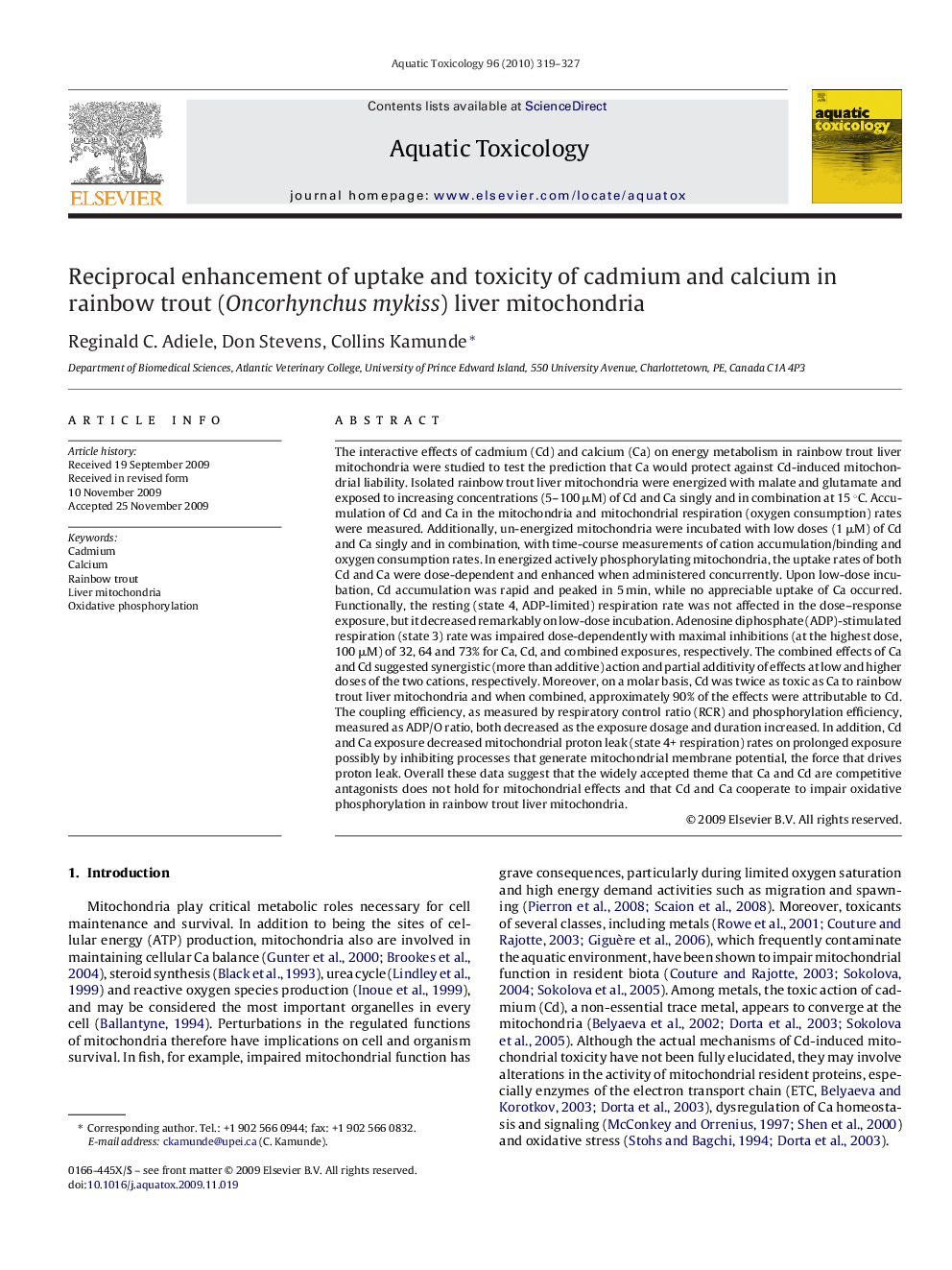| Article ID | Journal | Published Year | Pages | File Type |
|---|---|---|---|---|
| 4530309 | Aquatic Toxicology | 2010 | 9 Pages |
The interactive effects of cadmium (Cd) and calcium (Ca) on energy metabolism in rainbow trout liver mitochondria were studied to test the prediction that Ca would protect against Cd-induced mitochondrial liability. Isolated rainbow trout liver mitochondria were energized with malate and glutamate and exposed to increasing concentrations (5–100 μM) of Cd and Ca singly and in combination at 15 °C. Accumulation of Cd and Ca in the mitochondria and mitochondrial respiration (oxygen consumption) rates were measured. Additionally, un-energized mitochondria were incubated with low doses (1 μM) of Cd and Ca singly and in combination, with time-course measurements of cation accumulation/binding and oxygen consumption rates. In energized actively phosphorylating mitochondria, the uptake rates of both Cd and Ca were dose-dependent and enhanced when administered concurrently. Upon low-dose incubation, Cd accumulation was rapid and peaked in 5 min, while no appreciable uptake of Ca occurred. Functionally, the resting (state 4, ADP-limited) respiration rate was not affected in the dose–response exposure, but it decreased remarkably on low-dose incubation. Adenosine diphosphate (ADP)-stimulated respiration (state 3) rate was impaired dose-dependently with maximal inhibitions (at the highest dose, 100 μM) of 32, 64 and 73% for Ca, Cd, and combined exposures, respectively. The combined effects of Ca and Cd suggested synergistic (more than additive) action and partial additivity of effects at low and higher doses of the two cations, respectively. Moreover, on a molar basis, Cd was twice as toxic as Ca to rainbow trout liver mitochondria and when combined, approximately 90% of the effects were attributable to Cd. The coupling efficiency, as measured by respiratory control ratio (RCR) and phosphorylation efficiency, measured as ADP/O ratio, both decreased as the exposure dosage and duration increased. In addition, Cd and Ca exposure decreased mitochondrial proton leak (state 4+ respiration) rates on prolonged exposure possibly by inhibiting processes that generate mitochondrial membrane potential, the force that drives proton leak. Overall these data suggest that the widely accepted theme that Ca and Cd are competitive antagonists does not hold for mitochondrial effects and that Cd and Ca cooperate to impair oxidative phosphorylation in rainbow trout liver mitochondria.
